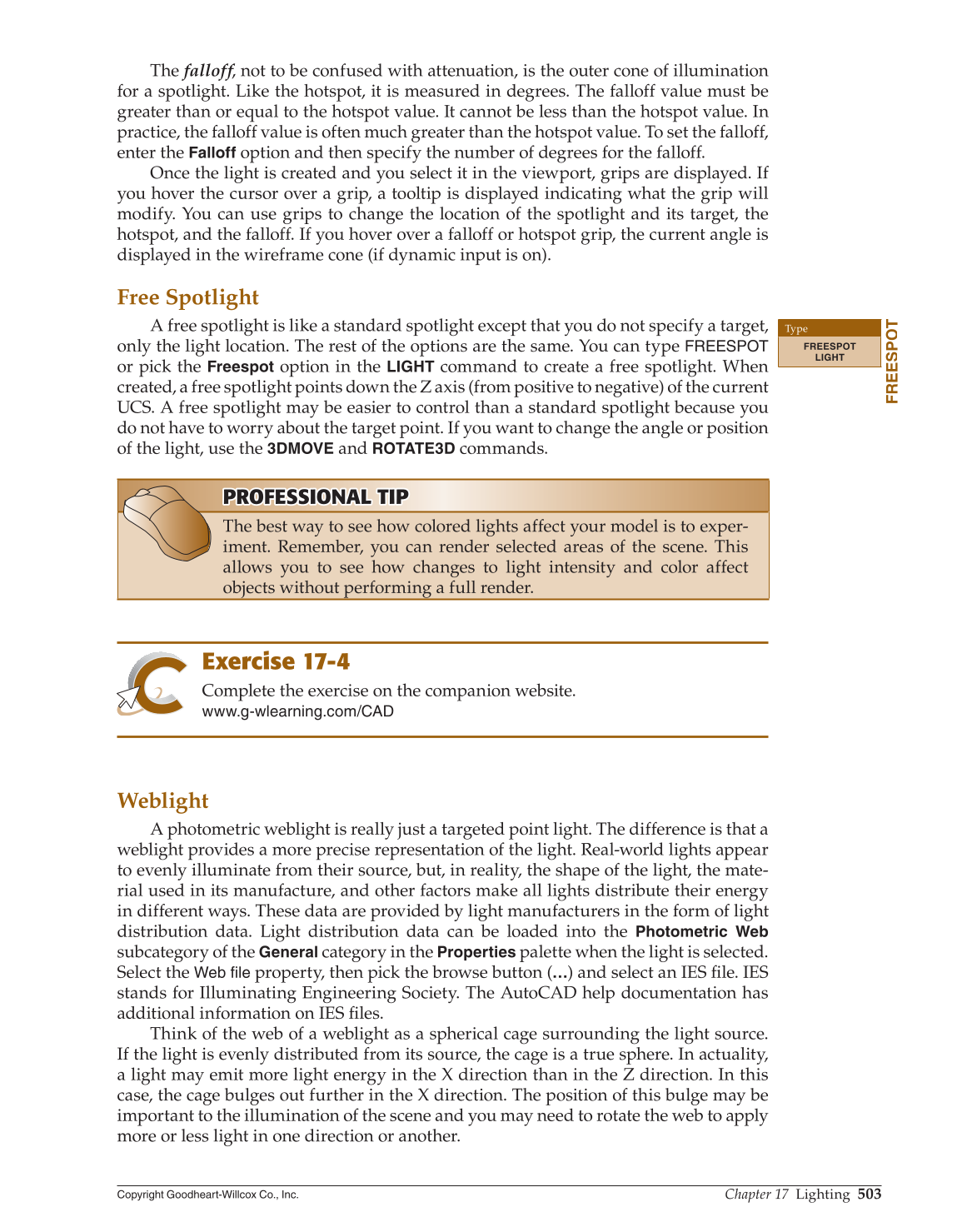Chapter 17 Lighting
503
Copyright Goodheart-Willcox Co., Inc.
The falloff, not to be confused with attenuation, is the outer cone of illumination
for a spotlight. Like the hotspot, it is measured in degrees. The falloff value must be
greater than or equal to the hotspot value. It cannot be less than the hotspot value. In
practice, the falloff value is often much greater than the hotspot value. To set the falloff,
enter the
Falloff
option and then specify the number of degrees for the falloff.
Once the light is created and you select it in the viewport, grips are displayed. If
you hover the cursor over a grip, a tooltip is displayed indicating what the grip will
modify. You can use grips to change the location of the spotlight and its target, the
hotspot, and the falloff. If you hover over a falloff or hotspot grip, the current angle is
displayed in the wireframe cone (if dynamic input is on).
Free Spotlight
A free spotlight is like a standard spotlight except that you do not specify a target,
only the light location. The rest of the options are the same. You can type
FREESPOT
or pick the
Freespot
option in the
LIGHT
command to create a free spotlight. When
created, a free spotlight points down the Z axis (from positive to negative) of the current
UCS. A free spotlight may be easier to control than a standard spotlight because you
do not have to worry about the target point. If you want to change the angle or position
of the light, use the
3DMOVE
and
ROTATE3D
commands.
PROFESSIONAL TIP PROFESSIONAL TIP
The best way to see how colored lights affect your model is to exper-
iment. Remember, you can render selected areas of the scene. This
allows you to see how changes to light intensity and color affect
objects without performing a full render.
Exercise 17-4
Complete the exercise on the companion website.
www.g-wlearning.com/CAD
Weblight
A photometric weblight is really just a targeted point light. The difference is that a
weblight provides a more precise representation of the light. Real-world lights appear
to evenly illuminate from their source, but, in reality, the shape of the light, the mate-
rial used in its manufacture, and other factors make all lights distribute their energy
in different ways. These data are provided by light manufacturers in the form of light
distribution data. Light distribution data can be loaded into the
Photometric Web
subcategory of the
General
category in the
Properties
palette when the light is selected.
Select the
Web file
property, then pick the browse button (…) and select an IES fi le. IES
stands for Illuminating Engineering Society. The AutoCAD help documentation has
additional information on IES fi les.
Think of the web of a weblight as a spherical cage surrounding the light source.
If the light is evenly distributed from its source, the cage is a true sphere. In actuality,
a light may emit more light energy in the X direction than in the Z direction. In this
case, the cage bulges out further in the X direction. The position of this bulge may be
important to the illumination of the scene and you may need to rotate the web to apply
more or less light in one direction or another.
FREE
S
P
O
T
Type
FREESPOT
LIGHT
